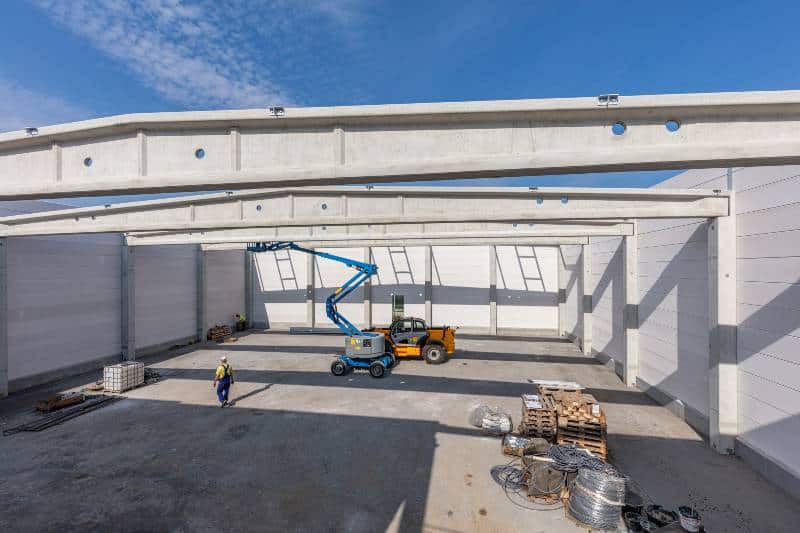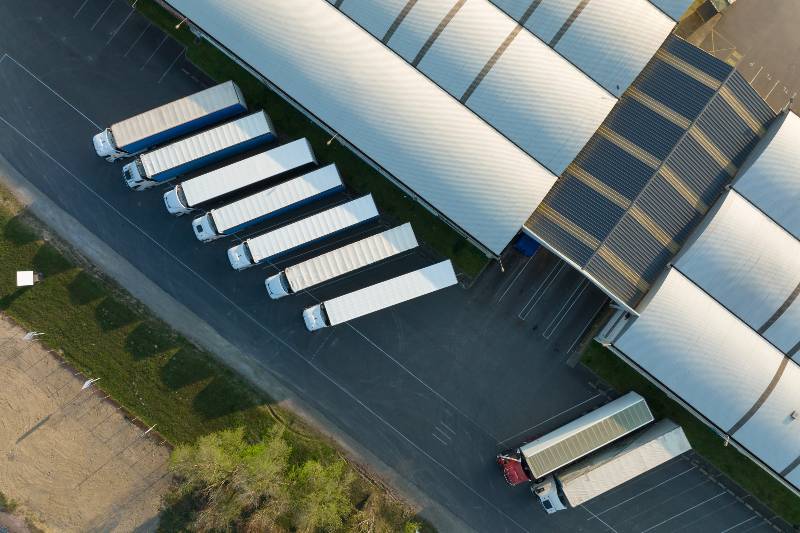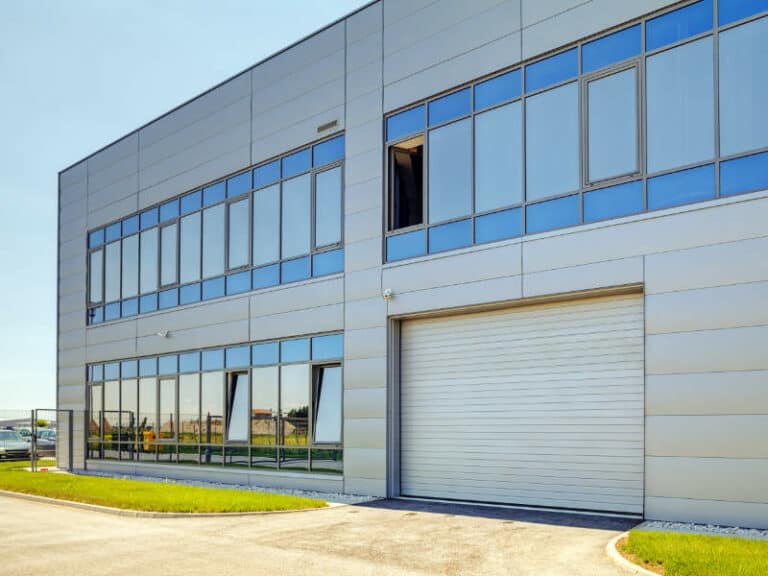Industrial commercial real estate is an essential component of a functioning economy. Businesses require it for either their production facilities, as well as to store their products and/or services. It also includes independent properties for warehousing and distribution purposes. Because businesses are increasingly becoming globalized, the location of industrial commercial real estate is of paramount importance.
For example, if a company wants to become part of a global supply chain network, then its industrial real estate must be in the right location where it can take advantage of the necessary infrastructure, logistics support systems, and available talent pools.
Additionally, having strategic access points to major transportation hubs will enable quicker product delivery or shipment to customers both locally and abroad. Thus, when considering industrial real estate investments, location matters significantly when attempting to maximize returns.
Location in industrial commercial real estate is always a big part of a property’s value and the expected return on investment. As long as the real estate markets in the U.S.’s big cities stay so hot, new investors can either pay more for a prime location or move out of the big cities to get better returns.
As cities across the U.S. experience a real estate boom, investors are presented with an important choice – pay top dollar for prime locations or explore more offbeat options in order to maximize return on investment. The decision is ultimately linked to the fundamental valuation and expected profitability of each respective location!
Key Takeaways
- Location is a pivotal factor in industrial commercial real estate investments.
- It is essential to consider the infrastructure, logistics support systems, and available talent pools when choosing a location.
- Strategic access points to major transportation hubs can enable quicker product delivery or shipment to customers both locally and abroad.

The role of transportation and logistics infrastructure in location selection
Importance of proximity to highways, airports, and ports
Transportation and logistics infrastructure is a critical aspects of determining where to locate your business. In order to thrive, you need to be able to get your goods or services from one place to another quickly and efficiently.
The proximity of highways, airports, and ports can make or break your location choice. You want your distribution center as close as possible to these types of transportation hubs so that you can decrease the time it takes for goods to reach their destination.
Impact on transportation and logistics costs
Transportation and logistics costs can have a significant impact on the location of a business. If a company wants to be able to reach a wider geographic area, it may need to set up its manufacturing or distribution facilities in an area with better infrastructure than another location would provide.
Commercial real estate companies that want to reduce their transportation and logistics costs may also choose to locate in areas where there is already well-developed infrastructure in place. This will allow them to save money by not having to build out their own infrastructure from scratch.
Case studies/examples
The role of transportation and logistics infrastructure in the property’s location selection is extremely important when it comes to minimizing business costs. Proper research into the availability of infrastructure such as roads, railways, airports, and ports should be done prior to setting up a business in a particular region.
This is particularly crucial if the business involves importing or exporting items since inadequate logistical support structures can have an effect on the company’s expenses, like increased time spent going to and from distribution centers or warehouses.
Additionally, having access to efficient modes of transport or alternative logistic options may allow for faster delivery of goods or services at a significantly lower cost. This will result in improved customer service and would help put the business one step ahead of the competition. Thus, the eventual economic implications could be substantial, with efficiently managed transport leading to both greater profits and greater customer satisfaction levels.
Demographics and labor market analysis
Role of access to skilled labor and resources
Access to skilled labor and resources is a key factor in the success of any industry and especially the commercial real estate industry. If a business does not have access to enough skilled workers, it will struggle to meet its goals. On the other hand, if a business has access to an abundance of skilled workers and resources, it will be able to thrive and grow.
Impact of population growth and job market trends
The impact of the population is also influenced by the average salary and the way salaries are set up. The way salaries are set affects prices, and prices affect supply and demand, which affects consumption. In a market-based economy, the size of the population affects both supply and demand, as well as prices.
Population and consumer preferences shift slowly, allowing ample time to adjust production and distribution accordingly. The current size of the population is impacting market demand through prices as well as flexibility in supply. By examining how today’s supply-and-demand dynamics have evolved over time, businesses can anticipate future trends and plan ahead for success in their respective markets.
Case studies/examples
In many parts of the world, the population is growing at an alarming rate. This explosive population growth has a great impact on the job market, as it creates competition for increasingly scarce resources. For example, in countries with growing populations, there is often increasing pressure on businesses to create more jobs and increase wages to keep up with demand.
Competition for jobs can also become fierce, making it difficult for individuals to find employment and further exacerbating inequality. Additionally, population growth also leads to an increase in consumer demand, creating a greater need for production from businesses and potentially even stretching the ability of local economies to meet these needs. In conclusion, population growth can have both positive and negative effects on the job market – it’s important to keep aware of how changing trends may impact your prospects for employment.
Zoning and regulatory considerations
Importance of compliance with environmental and safety regulations
When construction of a new project starts, the primary concern of planners and developers should revolve around zoning regulations and safety considerations. Regulations are in place (like an environmental assessment) for a very crucial purpose, to protect the environment and people living close to the project site from any kind of danger.
Hence, it is important for any construction company to stay aware of zones that dictate building densities, floor heights as well as land use regulations prior to starting a new project. Additionally, compliance with national standards regarding occupancy load, fire protection systems, life safety regulations, and special uses is also essential for the sustainability of a building and the safety of its interior inhabitants.
Compliance with zoning and regulatory considerations is non-negotiable – failure to abide will hurt both the environment and individuals who rely on safe environments before any other factor.
Impact on property value and rental rates
Zoning and regulatory considerations are essential for deciding how the land can be used and what can be built in certain areas. These policies have a direct impact on the cost of services and available housing by limiting potential uses of land. When a government enacts zoning laws, it typically limits the supply of housing or other services to only certain approved uses. This often results in an increase in prices since the demand is not being met with an ample supply.
Case studies/examples
The impact of environmental and safety regulations on property values and rental rates is undeniable. Property owners must adhere to government restrictions in order to maintain a safe and healthy environment, as well as keep their neighbors happy – after all, no one wants to live near a hazardous facility.
Doing so can also improve the marketability of the home: by ensuring quality standards for air and water quality, prospective buyers will be more willing to purchase the commercial property.
Furthermore, abiding by the guidelines can increase rental prices; investors will pay more for a properly maintained property with safeguards in place to ensure their well-being.
Economic factors
Impact of economic conditions on industrial commercial real estate demand
By making it more difficult for investors to fund new agreements and refinance current loans, tighter financial conditions have a direct impact on commercial property prices. Indirectly, they might affect the local market by dampening economic activity and so lowering demand for commercial properties like stores, restaurants, and factories.
During the global pandemic, commercial real estate markets fared differently in different regions, and a recent investigation confirms that varying financial conditions are a major factor in determining prices.
Commercial property prices fell less severely and recovered more quickly in economies with simpler financial conditions, such as lower real interest rates and other market conditions that make it easier to obtain financing. The commercial real estate market has been stronger in nations with higher immunization rates, lower levels of public containment measures, and larger fiscal support packages.
In regions where economic growth prospects are dim, and if rigorous containment measures are needed to halt new waves of infections, a sharp tightening in financial conditions might put commercial real estate under renewed strain.
This research also reveals that the pandemic has influenced trends like telecommuting and online shopping, both of which have an effect on the value of commercial properties.
Analysis of market trends and forecasts
The industrial real estate market is one of the major segments in the commercial real estate segment, and it has been growing at a significant pace over the past few years. The demand for industrial space is increasing exponentially as more and more companies are establishing their operations in this sector. According to Statistica, there were over 10 billion square feet of industrial space across the country of America in 2021.
This number is expected to grow by 2023 but there will be a lot of challenges ahead for those who want to invest in this segment because of certain factors like inflation rates, interest rates, etc., which may make it difficult for them to buy and sell properties as per their requirements.
Case studies/examples
Analysis of market trends and forecasts in commercial real estate (CRE) can be incredibly valuable for assessing the current state of CRE, as well as for predicting future prospects. Business owners and commercial real estate investors alike can take into account historic market data, and location data, analyze recent investment patterns, evaluate developing technology use cases, and determine the impact of economic shifts to gain an idea of where the sector is heading.
By monitoring this data regularly, stakeholders will have a better understanding of how their investments might fare in the months before them. Additionally, they’ll gain insights that can help inform their decision-making processes on when to buy or sell a valuable property. In short, analysis of market trends and forecasts in commercial real estate offers invaluable information to those invested in the space.
Found here is the Commercial Real Estate Trend in 2023, this will help you to identify important facts about the commercial real estate market and give you an idea about where the sector is headed in the coming years.
The importance of location in industrial commercial real estate FAQs
Why is location important in commercial real estate?
Location is a key factor in commercial real estate. Location is all about the customers. The location of a business, whether it’s a store, office space, or factory, affects how many customers will use it and how much they’ll spend there.
The location also affects the cost of doing business. A business can save money by locating in an area with lower rents or higher labor costs than other areas. If a business has high labor costs but low rent costs, it may be worth moving to another location even if that means losing some customers.
A company’s location also impacts its employees’ quality of life. Workers who live close to where they work are more likely to have flexible schedules and more time for their families and hobbies than those who work far away from home.
Location can also affect safety and security issues for businesses, especially if they’re located near residential areas or schools or near busy roads or highways. Businesses that operate on main streets tend to attract more foot traffic than those located in industrial areas away from large numbers of pedestrians or drivers on nearby roadways.
Why does location affect property value?
The location of a property affects a property’s value because it determines how many buyers will be interested in purchasing the property, where they will get financing, how easy it will be to market and sell the property, how long it will take to build out the property, and what type of taxes and insurance costs they may incur.
Industrial property is typically located in close proximity to heavy traffic areas such as highways, railroads, and airports. This means that they are more likely to sell quickly than properties with fewer access points. The proximity also means that industrial properties tend to have better access for building out later on in their lifecycle.
Which is more important, location or size?
Location is typically more important than size when it comes to commercial real estate investments. The location of a property determines how much money it can generate and how quickly it can be sold. A property located in an area with high demand for industrial space is likely to appreciate in value faster than one located in a low-demand area, even if the latter is larger in size.
How does the environment affect real estate?
The environment affects real estate in many ways. The most obvious one is that the climate of a particular location will affect its value. For example, a city located on the coast will be more appealing to some buyers than one that is inland.
Another way that the environment affects real estate is through pollution. Pollution can negatively affect natural resources such as water and topsoil, which may affect property values. Pollution also affects property values if it negatively impacts air quality or increases the risk of natural disasters such as hurricanes and earthquakes.
Finally, the environment can also affect real estate by affecting the availability of transportation infrastructure. For example, if there are few public transportation options available nearby or if highways are not well-maintained, then buyers may have difficulty getting to their homes from work or other locations where they live.
How does location affect value?
The value of a business is determined by the location of the business and the industry it operates in.
Location affects value because it is important to know where your customers are, what they like and dislike, and what they need. If you are in an area that has a high demand for the products or services you provide, then you will have more customers than if you were in an area with less demand.
The other reason why location affects value is that your competitors also affect your market share. If there are many competitors in an area then it will become difficult for one business to gain market share because there are so many other businesses competing for the same customers that want their services or products.
Conclusion
While there are many factors to consider when making an industrial commercial real estate investment, location is perhaps the most important. When choosing a property, be sure to take into account the infrastructure and logistics support systems in the area as well as the availability of talent pools. A strategic location with access to major transportation hubs can make a big difference in your ability to quickly deliver products or services to customers both locally and abroad. If you’re not sure where to start, I recommend giving me a call or scheduling a free consultation. I would be happy to help you find the perfect property for your needs.
Blog Articles Disclaimer
The information presented in articles on our website or affiliated platforms is exclusively intended for informational purposes. It’s crucial to grasp that this content does not constitute professional advice or services. We strongly recommend our readers to seek guidance from appropriately qualified experts, including, but not limited to, real estate and other attorneys, accountants, financial planners, bankers, mortgage professionals, architects, government officials, engineers, and related professionals. These experts can offer personalized counsel tailored to the specific nuances of your individual circumstances. Relying on the content without consulting the relevant experts may hinder informed decision-making. Consequently, neither Tolj Commercial Real Estate nor its agents assume any responsibility for potential consequences that may arise from such action.


![What is Build to Suit Development? [The Pros and Cons] 4 What is Build to Suit Development? [The Pros and Cons]](https://toljcommercial.com/wp-content/uploads/2022/07/Build-to-Suit-Development-1-768x512.jpg)



